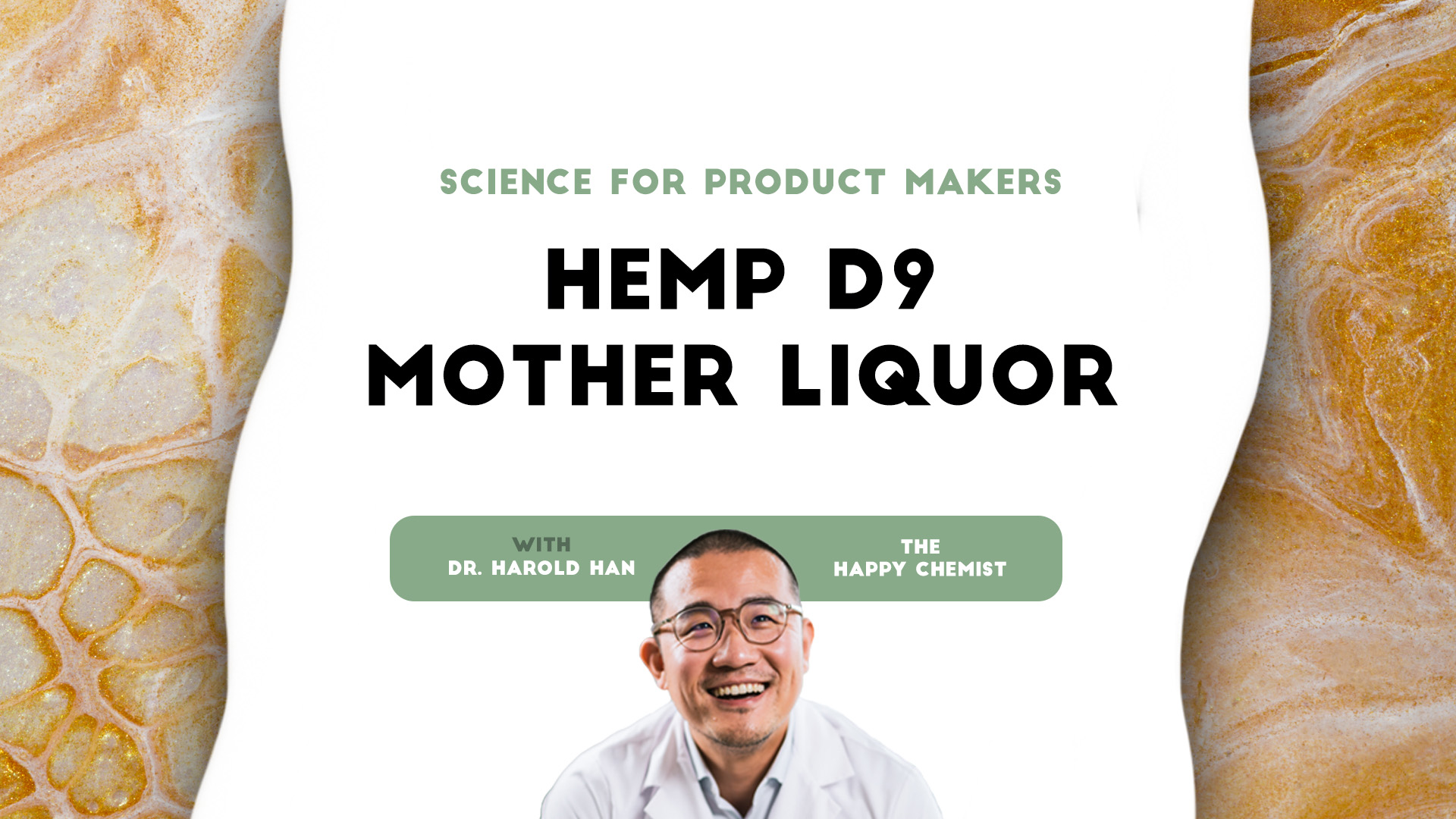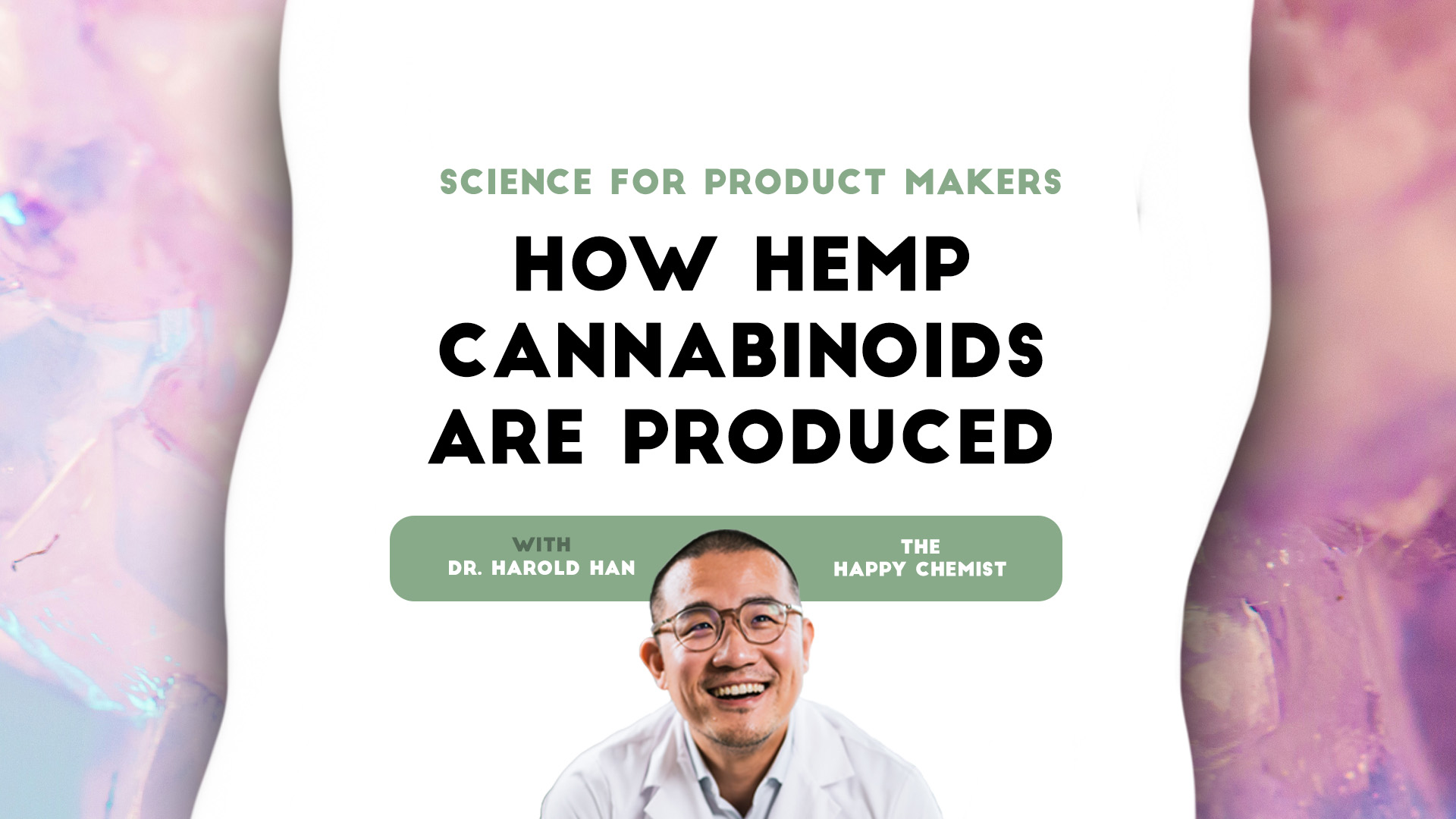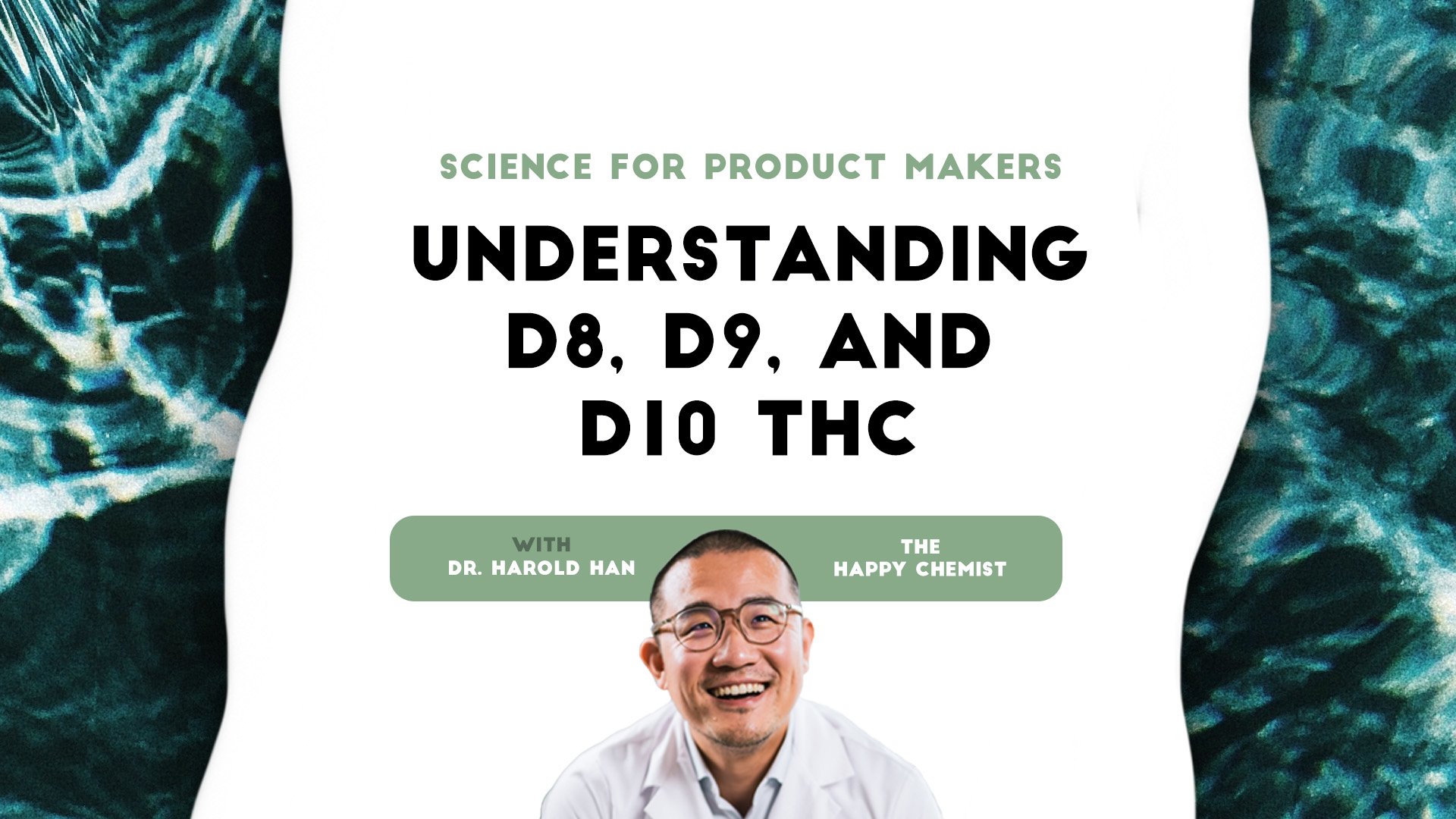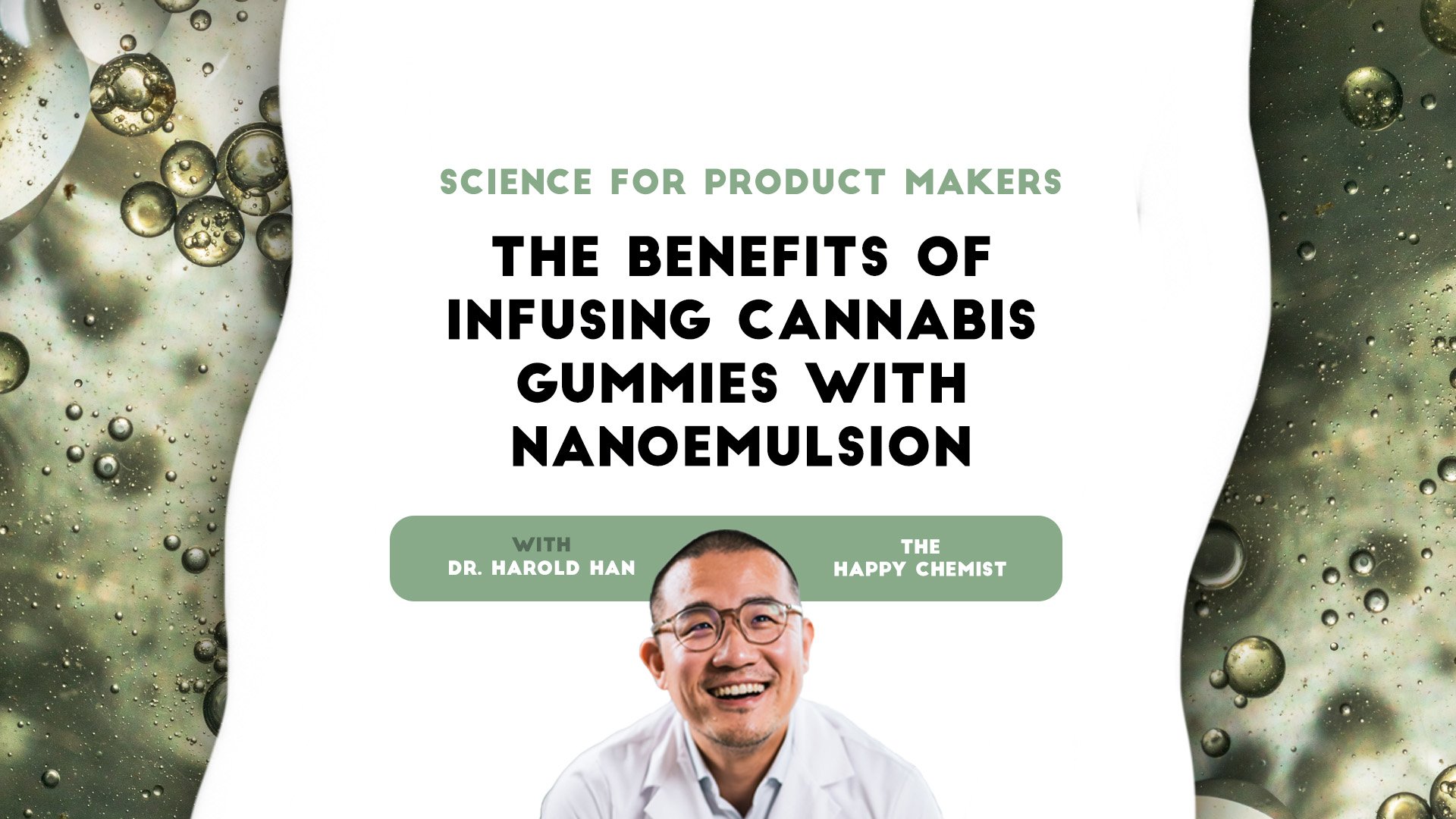Science for product makers: How hemp cannabinoids are produced
This post is also published as an article on Harold's LinkedIn profile. You can read and leave comments here.
3 min read
 Dr. Harold Han - "The Happy Chemist"
:
6/28/24 8:30 PM
Dr. Harold Han - "The Happy Chemist"
:
6/28/24 8:30 PM

This post is also published as an article on Harold's LinkedIn profile. You can read and leave comments here.
My last article discussed D9-THC chemically converted from CBD: the potential reaction by-products and leveraging NMR to evaluate by-product levels. In the hemp supply chain, there is another route to obtain D9-THC that does not require chemical conversion. This type of input, which is called Mother Liquor (MoLo) or Refined Hemp Oil, has gained a lot of traction. Hemp is defined by having <0.3% D9-THC in flower at harvest. 0.3% is a seemingly low amount, but given the hemp industry’s scale, it can still be a sizable source of THC if special processes are used to efficiently accumulate, enrich, and purify this low level THC from hemp.
Hemp cultivars usually contain high amounts of CBDa, which is the main origin of hemp CBD. Producing CBD isolate from hemp plants is a common practice nowadays. It starts with solvent extraction of the hemp trim, where CBDa is usually extracted into ethanol. The ethanol solution is then winterized, filtered, evaporated, decarbed and crystallized into CBD isolate. After this whole process, there is a leftover mixture called MoLo, which contains various types of plant materials. The D9-THC exists right within this MoLo mixture.
Accumulation refers to the combination of different MoLo batches together, usually from the leftovers of different CBD isolation batches, to amass an amount of THC that is significant enough for the next step.
Enrichment is the most important and costly step in the MoLo production process. The level of D9-THC in the accumulated MoLo mixture is slightly higher (~5-20%) than its level present in the hemp plant (<0.3%) because the CBD has been extracted. However, the MoLo still contains a variety of other plant materials such as minor cannabinoids, terpenes, flavonoids, chlorophyll, and plant waxes.
Enrichment is the process of reducing these other materials to increase the THC purity in the MoLo mixture. This is a critical step before the final distillation. High-throughput chromatography is often applied here, where the MoLo mixture flows through a column designed to separate and capture D9-THC. After enrichment, the remaining solution should contain over 60-70% pure THC. Better enrichment processes generate higher purity D9-THC, which is the foundation of a higher purity final MoLo distillate.
The final step is to distill this enriched input with regular distillation equipment. This will generate a distillate likely over 85% D9-THC. The flowchart below illustrates this process.

There are many considerations when choosing ingredients. MoLo-derived D9-THC is free from synthetic by-products, but it may have challenges in terms of purity, sensory, and cost. Since the MoLo mixture contains lots of plant materials, its final purity and sensory profile are largely affected by the enrichment process. Generally speaking, MoLo-derived D9-THC may have slightly lower THC purity and slightly higher plant-forward sensory notes; this herbaceousness is nearly undetectable at low doses, but it becomes more obvious at higher doses and has the potential for higher inconsistency between batches (some may argue if they do flash chromatography, they can make MoLo consistent independent of the input material). The application of chromatography also adds to the cost, making MoLo-derived inputs more expensive compared to converted inputs. The table below compares the two types of inputs.

Demand for MoLo input has been steadily increasing, especially driven by large beverage / alcohol distributors. Due to the nature of this extraction process, product makers that favor MoLo-derived D9-THC do so because they believe they can completely avoid synthetic by-products. That being said, when done correctly, chemical conversion should be able to deliver an input free of by-products as well. In fact, ingredients in mature industries (such as vitamins and flavors) are most likely produced synthetically. I am sure our industry can one day reach that level of consistency and quality, and until then, utilizing D9-THC from MoLo is emerging as a common request among beverage brands.
Dr. Harold Han — the “Happy Chemist” — combines his storied background in emulsion chemistry and science with curiosity and fascination in the rapidly growing cannabis industry. Developing nano and micro emulsions his entire career, Harold holds a Ph.D in Surface Chemistry from NYU and is the holder of multiple patents for his inventions in emulsion chemistry.
As the Chief Science Officer at Vertosa, Harold spearheads the company’s development of industry-leading and customized active ingredients for infused product makers, offering pre-suspended aqueous solutions to create incredibly homogenous and stable products while maximizing bioavailability, clarity, and taste.
To learn more about the science of cannabis, make sure to follow Harold on LinkedIn and check out his Happy Chemist videos.

This post is also published as an article on Harold's LinkedIn profile. You can read and leave comments here.

This post is also published as an article on Harold's LinkedIn profile. You can read and leave comments here.

This post is also published as an article on Harold's LinkedIn profile. You can read and leave comments here.